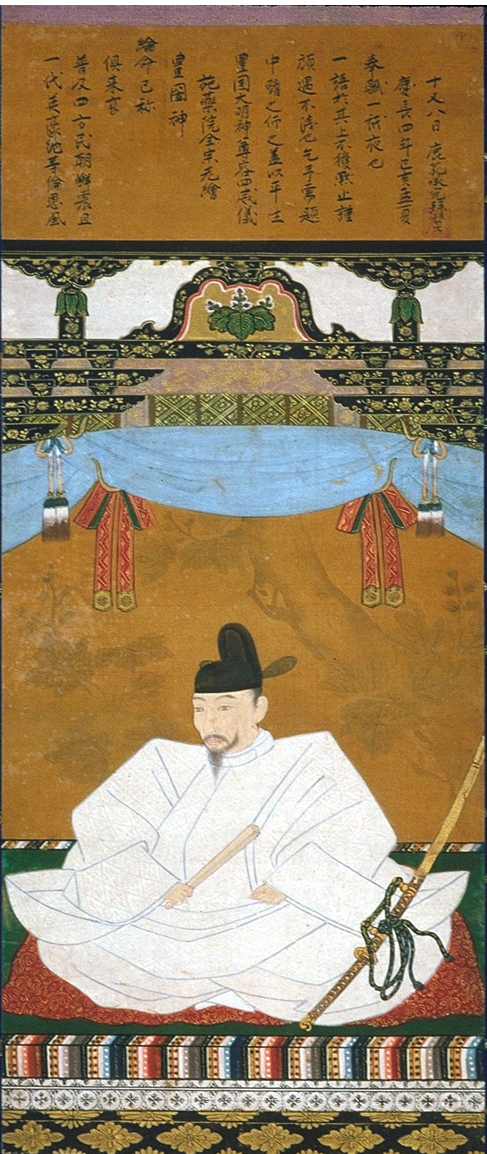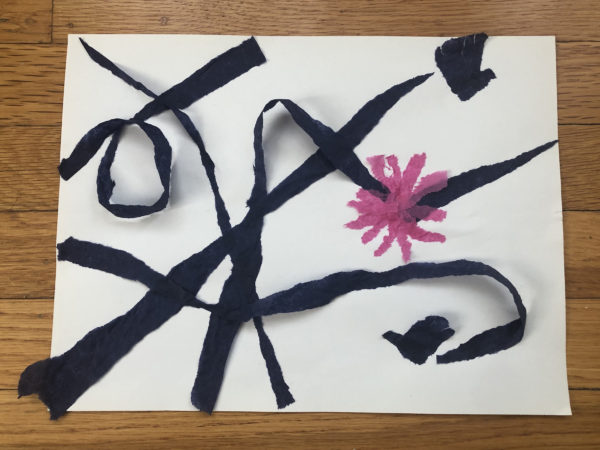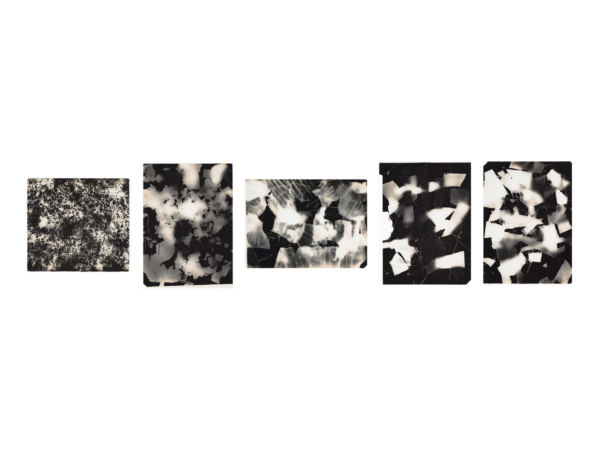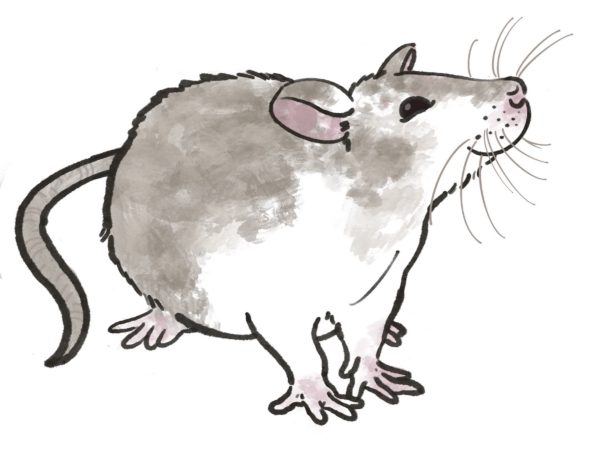Activity
The Samurai (Vocabulary)

Portrait of Toyotomi Hideyoshi, 1599, by Seisho Shotai. Japan. Edo period (1615–1868). Hanging scroll, ink and colors on silk. Gift and Purchase from the Harry G.C. Packard Collection Charitable Trust in honor of Dr. Shujiro Shimada; The Avery Brundage Collection, 1991.61.
Bu and bun, terms used to refer to the combination of military (bu) skills and cultivation of peaceful arts (bun) that were expected of most samurai. Excellence at archery and swordsmanship are examples of bu, while composing poetry, watching Noh plays, or learning the “Way of Tea” (Chado) are all examples of bun.
Buddhism, with Shinto, one of the two major religions of pre-modern Japan. Practices derived from the teachings of the historical founder, Siddhartha Gautama (also known as the Buddha or Shakyamuni), focus on principles of ethical conduct, the cultivation of wisdom, and mental discipline, with the goal of extinguishing desire and gaining enlightenment or salvation from the cycle of rebirth.
Buddhism, Pure Land, a sect devoted to Amitabha, Buddha of the Western Paradise (also known as ‘the Pure Land’). Pure Land adherents revered Amitabha, believing that a simple expedient device, recitation of his name, could lead to rebirth in his wondrous paradise after death.
Buddhism, Zen, a form of Buddhism that stresses seated meditation and pondering of koan— paradoxical statements or questions—as practices leading to enlightenment (see Video: Zen Buddhism).
Bushido, literally the “Way of the Samurai,” the systematic code of warrior ethics formulated during the seventeenth century.
Chado, literally, the “Way of Tea.” Commonly referred to in English as the “tea ceremony,” however, tea practioners favor the term “tea gathering.” Chado evolved in the sixteenth century into a ritualized performance of prescribed gestures and verbal exchanges, conducted by the host and his guest(s) during the preparation, serving, and drinking of tea (see Background Information: Chanoyu: The Japanese Art of Tea).
Chanoyu, literally “hot water for tea,” another name for Chado (see above) (see Background Information: Chanoyu: The Japanese Art of Tea).
Daimyo, literally “holders of the great named lands,” a military rank immediately below shogun. Used to designate the most powerful landowners and feudal lords, also the heads of major military clans.
Domaru, a form of armor with a continuous, sheath-like cuirass. Initially worn by foot soldiers and attendants, in the fourteenth century the domaru was adopted by higher-ranking samurai who prized its flexibility and lightness relative to traditional oyoroi armor.
Emperor, the hereditary ruler of Japan, traditionally said to be a direct descendant of the Sun Goddess, Amaterasu no Omikami. While an emperor has reigned in Japan throughout recorded history, the military elite (samurai) held direct political and economic control of the government between the late 1100s and 1868.
Gunbai and gunsen, war fans, used by samurai to direct the movement of their troops.
Heike, or The Tales of the Heike, a war tale tracing the struggle for control of Japan between two powerful military clans, the Taira (also known as Heike) and Minamoto (also known as Genji) clans. Recounts a series of battles culminating in the Minamoto victory in 1185 (see Background Information: Samurai War Tales).
Jinbaori, a military camp jacket, worn over a suit of tosei gusoku armor.
Kabuto, a samurai helmet.
Kago, palanquins used to convey wealthy samurai on long and short journeys, either within the city or as a part of daimyo processions between their home domains and the capital.
Katana, the classic “samurai sword,” with a curved steel blade, created through repeated folding, cutting, hammering, re-forging, and polishing, resulting in an exceptionally hard, razor-sharp edge. Worn as a pair with the shorter wakizashi.
Koan, paradoxical statements or questions in Zen Buddhism as a spur to enlightenment or spiritual awakening.
Mappo, the Latter Day of the Buddhist Law, a degenerate age when people would be incapable of achieving salvation through adherence to Buddhist doctrine alone.
Matchlock gun, a type of musket introduced to Japan by the Portuguese in 1543 (see artwork: Matchlock gun).
Mon, family crests, of circular form, used as identifying marks on battlefield flags and many other goods owned or commissioned by high-ranking samurai.
Noble, a member of the aristocratic class and imperial court official, during the Heian period (794–1185).
Noh, a traditional form of dance-drama patronized by members of the warrior class.
Oyoroi, literally “great armor,” the boxy and loose-fitting protective gear developed for mounted warriors in the late Heian (794–1185) and Kamakura (1185–1333) periods. Oyoroi is typically constructed of leather and iron plates (lames), laced together in tiers.
Retainer, an individual who serves a lord, bound by loyalty and/or contractual obligation.
Ronin, disenfranchised samurai who have lost the patronage of their lord following his death or fall from power, or as a consequence of their own misdeeds.
Samurai, literally “one who serves,” members of the military or warrior class, active in Japan between the twelfth and nineteenth centuries.
Sankin kotai, system of alternate attendance requiring each daimyo to spend alternate years residing in the capital, Edo. During years spent in the home domain, the daimyo had to leave their families as hostages in Edo.
Sankin kotai, system of alternate attendance requiring each daimyo to spend alternate years residing in the capital, Edo. During years spent in the home domain, the daimyo had to leave their families as hostages in Edo.
Seppuku, ritual suicide, used to avoid a dishonorable death, as a means of expressing loyalty, or to atone for a lack of judgment or other error in the conduct of one’s duty.
Shogun, the highest military rank and title for the head of the military government, known in English as the “shogunate.” Nominally appointed by the emperor, the shogun often passed their title in hereditary fashion to successive family members, as in the case of the 250-year Tokugawa shogunate.
Tales of the Heike, The, see Heike, above.
Tosei gusoku, literally “modern equipment,” a term used to refer to a wide variety of armor styles incorporating welded metal pieces, and the use of rivets and hinges in place of some lacing. Developed in the sixteenth century in response to the need for armor not easily penetrated by musket fire.
War Tales, stories chronicling the lives of warriors and their battles, written between the tenth and seventeenth centuries (see Background Information: Samurai War Tales).
Waka, the classical verse of Japan.
Wakizashi, short sword, companion to the katana.
Vassal, an individual who pledges loyalty and military service to a lord in exchange for the use of land or other income.






